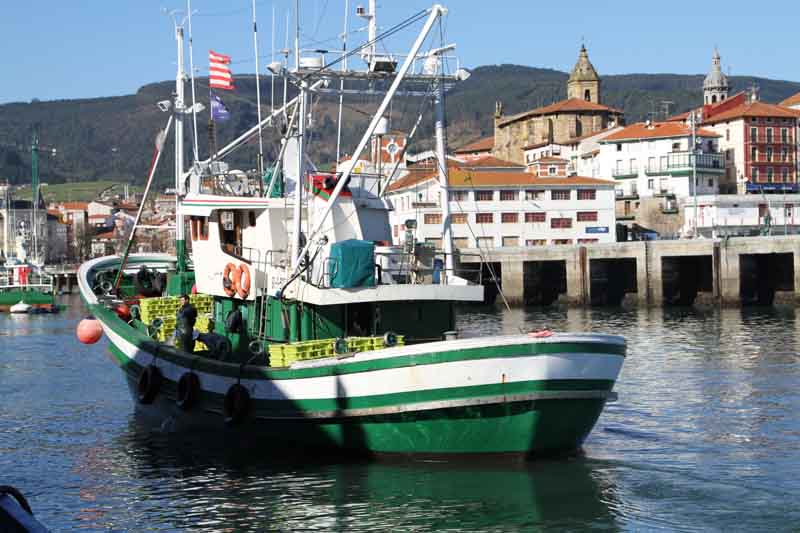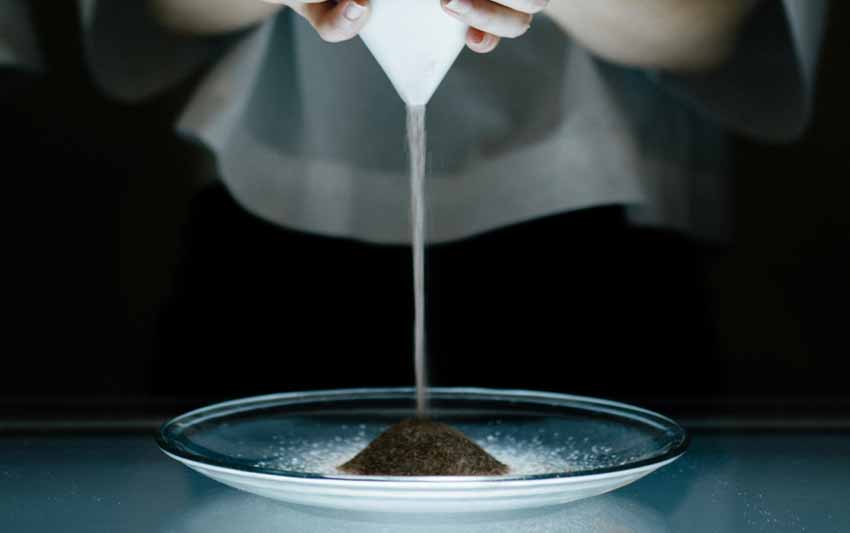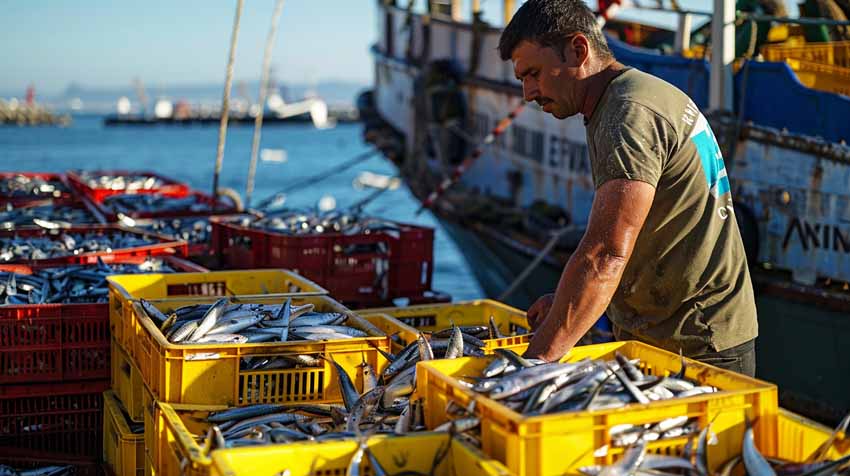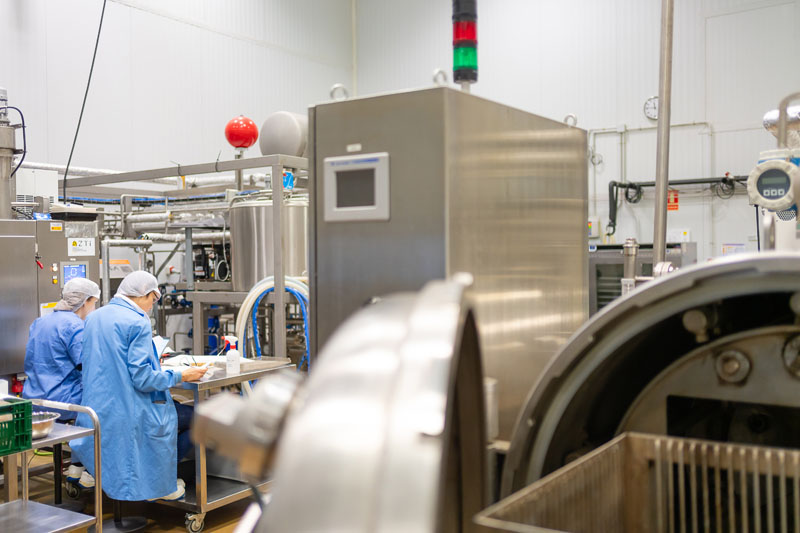Machine learning and big data methods for modelling the mackerel catch in the North East Atlantic
Últimas noticias
Savour and sustainability: insects in gastronomy
Catching fish living at depths of more than 200 meters may have climatic consequences
The future of marine resources and its impact on food security
Nerea Goikoetxea, Ainhoa Caballero, Izaro Goienetxea, Leire Ibaibarriaga and Iñaki Quincoces. Researchers in fishing technologies and sustainable fisheries management. AZTI.
The north-east Atlantic mackerel (Scomber scombrus) is a pelagic migratory species found in western Europe from Gibraltar to Svalbard in Norway. This species makes seasonal migrations along the west coast of Europe. This species spawns between January and June along the European continental shelf from Portuguese waters to Scottish waters and the North Sea, moving northwards as the water warms. After spawning in late spring or early summer, mackerel begin a trophic migration northwards to waters west of the British Isles. Between June and August they reach the North Sea and Norwegian Sea where they spend the summer and autumn feeding. They complete their seasonal migration by returning to their spawning grounds in the Cantabrian Sea in the early months of the year. This migration determines the start and development of the mackerel fishery in the Cantabrian Sea.
As is common with pelagic species, mackerel population dynamics are highly dependent on environmental conditions, in particular: the influence of temperature on migration, distributional changes and spawning initiation; the importance of prey availability and large-scale oceanic patterns on larval recruitment and survival; the effect of temperature and population density on growth; and the importance of turbulence levels on larval survival and subsequent recruitment of juvenile mackerel.
Índice de contenidos
Northward migration and earlier mackerel fishing
In recent years, a northward migration of the centre of gravity of mackerel egg production has been estimated, related both to the enlargement of the studied area and to the warming of the waters of the Northeast Atlantic. Specifically, different studies have estimated a northward migration of 28-38 km for each degree increase in sea temperature (Hughes et al., 2014; Bruge et al., 2016). However, a recent AZTI study (Chust et al., 2023) finds that the northward migration is 370 km for each degree of sea warming, which is faster than predicted in previous studies. This same temperature effect has been observed for mackerel in the northwest Atlantic with a northward and eastward migration of 250 km (Overholtz et al., 2011). These results are suggesting that mackerel abundance may decrease in waters such as the Bay of Biscay due to warming waters.
Although the stock is in a healthy state, possible changes in its spatial distribution could lead to changes in the corresponding fisheries. Indeed, between 2000 and 2006, it was observed that the mackerel catch in the Cantabrian Sea handline fishery was advanced by 29 days, from April to March (Punzón and Villamor, 2009). Similarly, in a study carried out for the following years (2006-2018), an advance of the mackerel fishery in these months was observed (Rodríguez-Basalo et al., 2022). It has also been noted that changes in the distribution of Northeast Atlantic mackerel have led to new fishing opportunities in waters further northwest, such as Iceland. Since 2008, a new mackerel fishery has opened in the central North Atlantic, which could be a result of the northward migration of this species: mackerel eggs have been found in Rockall Bank and the Faroe-Iceland Ridge since 2020 (Gíslason et al., 2020). In the case of coastal mackerel in the Bay of Biscay, changes in distribution have been observed in the last two years, making it more difficult to locate schools of mackerel.

Machine learning to predict mackerel distribution
Understanding and discovering the variability of its habitat is essential to better understand the changes observed in the distribution of this small pelagic species, and thus to be able to predict the distribution of the species during the fishing period. Among the different approaches that can be used to build these predictive models, machine learning is particularly important. These models, once tuned and validated using historical data, can make predictions using only information on environmental variables as inputs to the model. AZTI has studied the case of mackerel as part of the FDSS-ML-NX project (Artificial intelligence, massive data and tools to support fishing efficiency). Specifically, two independent models were developed for handline and purse seine fishing methods. These models are able to predict 72% (for handline) and 81% (for purse seine) of the occasions when a high catch has occurred, based on environmental information such as thermal characteristics and integrated oxygen concentration in the water column, surface salinity and sea level anomaly, among others. Given the changes in the distribution of this species in recent years as a result of changes in environmental conditions and their possible impact on the corresponding fisheries, this type of predictive model can be a supporting tool to reduce search time and therefore hours at sea and distance travelled. Knowledge of the effects of changing marine environmental conditions on commercial pelagic species, together with sustainable stock management, are two fundamental tools to ensure the sustainability of the species and hence of this fishery.
REFERENCES
- Bruge, A., Alvarez, P., Fontán, A., Cotano, U., Chust, G., 2016. Thermal niche tracking and future distribution of Atlantic mackerel spawning in response to ocean warming. Front. Mar. Sci., 3: 86. Doi: 10.3389/fmars.2016.00086
- Chust, G., González Taboada, F., Álvarez, P., Ibaibarriaga, L., 2023. Species acclimatization pathways: latitudinal shifts and timing adjustments to track ocean warming. Ecol. Ind. 146. https://doi.org/10.1016/j.ecolind. 2022.109752
- Gíslason, D., Helyar, S.J., Óskarsson, G.J., Ólafsdóttir, G., Slotte, A., Jansen, T., Jacobsen, J.A., Ólafsson, K., Skirnisdottir, S., Dahle, G., Siegstad, H., Joensen, H., Curti, K.L., Grégoire, F., Masse, J., Sveinsson, S., Daníelsdóttir, A.K., Pampoulie, C., 2020. The genetic composition of feeding aggregations of the Atlantic mackerel (Scomber scombrus) in the central north Atlantic: a microsatellite loci approach. Journal of Mar. Sci. 77 (2): 604–612. https://doi.org/10.1093/icesjms/fsaa003
- Hughes, K.M., Dransfeld, L., Johnson, M.P., 2014. Changes in the spatial distribution of spawning activity by north-east Atlantic mackerel in warming seas: 1977-2010. Mar. Bio., 161: 2563-2576. DOI: 10.1007/s00227-014-2528-1.
- Overholtz, W.R., Hare, J.A., Keith, C.M., 2011. Impacts of Interannual Environmental Forcing and climate change on the distribution of Atlantic mackerel on the U.S. Northeast continental shelf. Mar. Coast Fish., 3: 219-232.
- Punzón, A., Villamor, B., 2009. Does the timing of the spawning migration change for the southern component of the Northeast Atlantic Mackerel (Scomber scombrus, L. 1758)? An approximation using fishery analyses. Cont. Shelf Res. 29: 1195-1204. doi: 10.1016/j.csr.2008.12.024
- Rodríguez-Basalo, A., Punzón, A., Ceballos-Roa, E., Jordà, G., Gonzáleza-Irusta, J.M., Massutí, E., 2022. Fisheries-based appriach to disentangle mackerel (Scomber scombrus) migration in the Cantabrian Sea. Fish. Ocean., 31: 443-455.
Article published in Industrias Pesqueras
(This project has been funded by NextGenerationEU as part of the Spanish Government’s Recovery, Transformation and Resilience Plan.)








